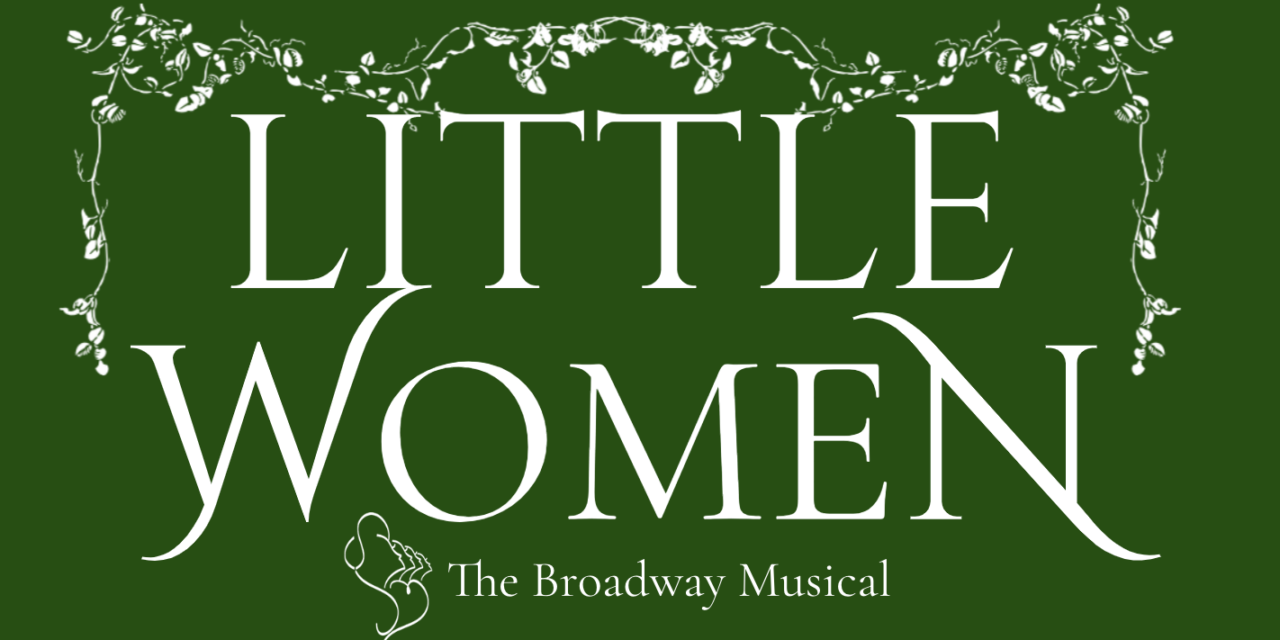OGDEN — Broadway on the Side is entering new territory in the studio’s repertoire by staging the Broadway musical adaptation of Little Women by Louisa May Alcott. The Broadway adaptation of Alcott’s semi-autobiographical novel with book by Allan Knee, lyrics by Mindi Dickstein and music by Jason Howland takes the story of the March sisters and mother Marmee in Civil War Era Massachusetts and adds musical moments to vignettes from the novel. Directed by Megan Worthen Nelson, the production is the first fully staged musical for this Weber County based production company which until now has focused on staged cabaret performances. The effort and ambition to produce a musical is commendable and a great fledgling effort.
The standout performance of the cast (this review is of the so-called “March” cast) was Dusti Bagley as Jo March. Jo is the central narrative thread of the adaptation, with her stories and emotions leading much of the vignettes and corresponding songs. Bagley triumphed vocally and was invigorating to watch, particularly in Jo’s act one number “Astonishing”. Bagley took command and then some in this performance, and her Jo March was a force of nature. Bagley’s enthusiasm matched the motivations of Jo, the sister who wants to be together with her family. In this regard, Bagley blended well with the other March sisters and Marmee, played by Stacey Dixon, in creating a cohesive family unit that is the heart of the story. The blend of the March family voices was wonderful, especially as the sisters performed the beautiful vocal quartet “Our Finest Dreams”.
Daphne Dixon was wonderful as fellow March sister Beth, serving her sisters in kindness and sweetness, in contrast to Bagley’s dominant personality. Dixon portrayed a sincere, delightfully present spirit when dueting on the piano with the cantankerous neighbor Mr. Laurence, played by Nick Cash. Later, Dixon’s performance was particularly moving during Beth and Jo’s Cape Cod duet “Some Things Are Meant to Be”, where Dixon and Bagleys’ vocal blend and talent combined for a deeply effective performance.
While there are not many dance numbers, those that did occur were well choreographed by Worthen-Nelson for the setting and energy of the songs. However, the efforts of the performers did not quite overcome the limitations of this specific adaptation, which hits the highlights of the novel without fully developing the relationships of the characters. Pacing of this adaptation also suffers during the second half of the first act—something this production unfortunately did not alleviate. Some scenes also feel disconnected from surrounding scenes and overall character arcs lack development. Aunt March’s turn to bring Amy instead of Jo to Europe feels sudden and begs explanation. Romantic relationships such as Amy/Laurie and John Brooke/Meg also seem to happen and resolve quickly and without much development.
It’s a shame that the musical numbers are not more strongly incorporated to create momentum in the script, because the vocal quality of the performances were well done. I found it easy to envision the cast having great success with a superior musical text. The structure of the musical is generally quite repetitive as songs just seem to happen and extend scenes either without much resolve or long past their climax. The adaptation lacks a big dramatic question to drive the actions of the characters forward. While the characters are endearing and lovely, their motivations are poorly established and rely on the audience’s knowledge of the original text.
Having attended a Broadway on the Side cabaret almost a year ago, it was impressive to see the changes in the space—including the theater space in the storefront, raised stage and additional backstage spaces. The production company feels as ambitious as Jo March’s theatricals in the attic. The stage, with set design by Worthen-Nelson, was lightly set with a sofa, piano and fireplace hearth that was suited to transform into the several home settings of the production. Cleverly, the fireplace hearth doubled as a bookshelf when rotated, and various sofa accent blankets assisted in transforming the space. A colorful patchwork quilt on the sofa was perfect for the March sitting room, and contrasted the delicate simple white quilt which distinguished the sofa for the Valentine’s Day ball in a higher class setting. The simple backdrop of draped foliage created a nice framing behind the stage, although the stage did noticeably creak as performers walked across it.
Costumes by head designer Leia Alitagtag were lovely and established the setting of the production well. Amy as the youngest March sister was dressed in more juvenile knee-length dresses compared to the older Jo and Meg, which helped visually display her feelings of inferiority and desire for maturity. Likewise, hair design by Abby Payne-Peterson assisted in aging the girls for the second act as the sisters wore more appropriate updos rather than loosely down.
It was great to see Broadway on the Side take ambitious steps to produce a full musical like Little Women. This current production has much to recommend in vocal talent with sincerity of character and performance, and the future looks promising for future musical productions. While there are qualms with the specifics of this Broadway adaptation, those looking to support this growing performing arts studio will find performers worth applauding in this sweet, sincere production of a classic novel.





